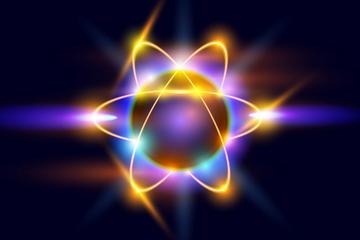The uncertainty principle lies in the plane of quantum mechanics, however, in order to fully understand it, we turn to the development of physics as a whole. Isaac Newton and Albert Einstein are perhaps the most famous physicists in the history of mankind. The first at the end of the XVII century formulated the laws of classical mechanics, which obey all the bodies surrounding us, planets, subject to inertia and gravity. The development of the laws of classical mechanics led the scientific world to the end of the 19th century to the opinion that all the basic laws of nature are already open, and man can explain any phenomenon in the universe.
Einstein's Theory of Relativity
As it turned out, at that time only the tip of the iceberg was discovered, further research threw new, completely incredible facts to scientists. So, at the beginning of the 20th century, it was discovered that the propagation of light (which has a finite speed of 300,000 km / s) does not obey the laws of Newtonian mechanics. According to Isaac Newton’s formulas, if a body or wave is emitted by a moving source, its speed will be equal to the sum of the source’s speed and its own. However, the wave properties of the particles were of a different nature. Numerous experiments with them have shown that in electrodynamics, a science young at that time, a completely different set of rules works. Even then, Albert Einstein, together with the German theoretical physicist Max Planck, introduced his famous theory of relativity, which describes the behavior of photons. However, for us now it’s important not so much its essence as the fact that at this moment the fundamental incompatibility of the two areas of physics was revealed, to combine

which, incidentally, scientists are trying to this day.
The birth of quantum mechanics
The study of the structure of atoms completely destroyed the myth of comprehensive classical mechanics. Ernest Rutherford's experiments in 1911 demonstrated that an atom has even smaller particles (called protons, neutrons, and electrons). Moreover, they also refused to interact according to Newton's laws. The study of these smallest particles has generated new postulates of quantum mechanics for the scientific world. Thus, perhaps the ultimate understanding of the Universe lies not only and not so much in the study of stars, but in the study of the smallest particles, which provide an interesting picture of the world at the micro level.
Heisenberg's uncertainty principle
In the 1920s, quantum mechanics took its first steps, and scientists only
were aware of what follows from it for us. In 1927, the German physicist Werner Heisenberg formulated his famous principle of uncertainty, demonstrating one of the main differences between the microworld and our familiar surroundings. It consists in the fact that it is impossible to simultaneously measure the speed and spatial position of a quantum object, because when we measure, we have an effect on it, because the measurement itself is also carried out using quanta. If it’s completely banal: evaluating an object in the macrocosm, we see the light reflected from it and, on the basis of this, draw conclusions about it. But in
quantum physics , the influence of light photons (or other derivative measurements) already affects the object. Thus, the uncertainty principle caused understandable difficulties in studying and predicting the behavior of quantum particles. At the same time, interestingly, one can measure separately the speed or position of the body separately. But if we measure at the same time, then the higher our speed data, the less we will know about the actual position, and vice versa.